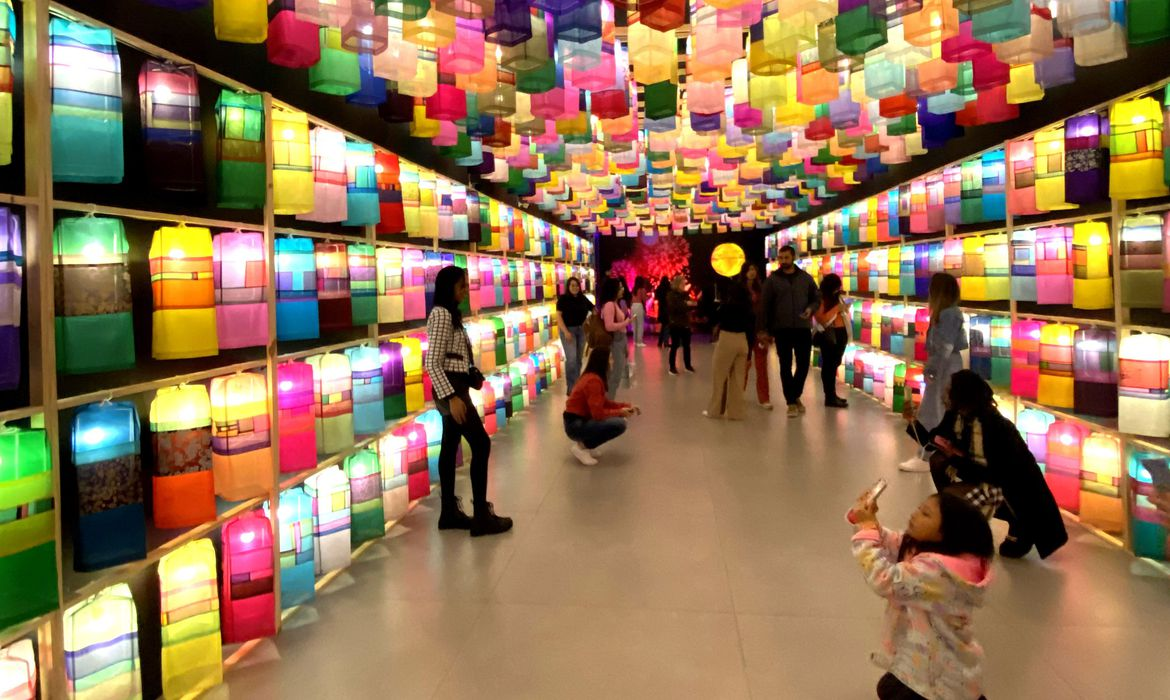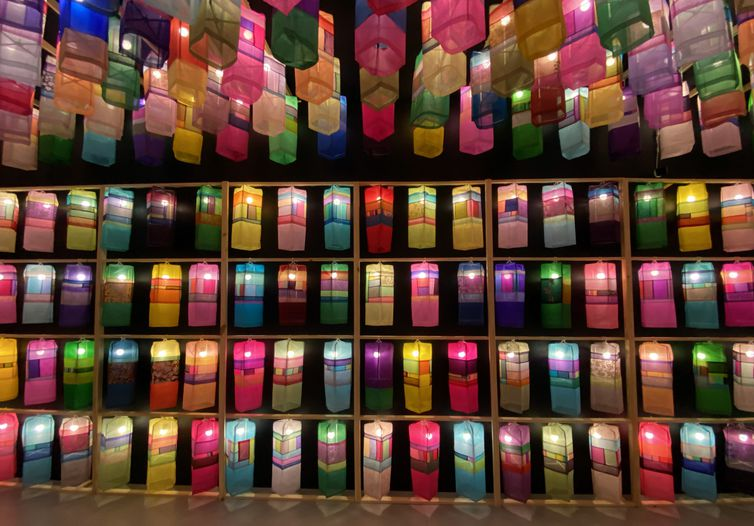Exhibition highlights the importance of lanterns in Korean culture
Show runs until August 20th at the Korean Cultural Center in São Paulo

In Korean culture, colorful lanterns are part of a traditional festival celebrated every year in some cities of the country. And it is these lanterns that now take center stage in an illuminating exhibition at the Korean Cultural Center of Brazil, located on Avenida Paulista in São Paulo. Entitled "Lights of Korea - Jinju City Exhibition," the show is free, started on Sunday (August 18), and will run until August 20th.
"The exhibition was done in collaboration with the city of Jinju, the largest manufacturer of Korean silk. The lanterns exhibited here at the center are made of Korean silk from Jinju. Besides making clothes, the so-called hanbok [traditional Korean clothing], they started using silk to make lanterns. This city has one of the largest light festivals in Korea, which takes place in August," explained Mideum Seo, responsible for the exhibition, in an interview with Agência Brasil.

For this exhibition in São Paulo, a tunnel was created with about 1,200 colorful lanterns, culminating in a full moon that is extremely illuminated and where visitors can form a line for photos. "They [the lanterns] represent light, hope, and unity, and are an iconic symbol of our country's tradition," said Cheulhong Kim, director of the Korean Cultural Center in Brazil, in a statement.
At the end of the show, visitors are also greeted with photos and videos showing what the festival in Jinju is like, with its traditional floating lanterns. "As far as I know, in the city of Jinju, the festival features around 700,000 lit lanterns," said Mideum Seo.
This tradition dates back to the Imjin War in 1592, when the city was the stage of a Japanese invasion. To protect the city, people started illuminating the river with lanterns. "The public puts lanterns in the river of Jinju city. That was the beginning of the tradition," said the exhibition's organizer.
According to the Korean Cultural Center, the floating lanterns were used as a military strategy to prevent troops from crossing the Namgang River.
But beyond the city's protection, these lanterns also came to serve as a means to spread messages or to communicate between family members separated by the river. "A mother who was far from her soldier son would release a lantern with letters," he said.